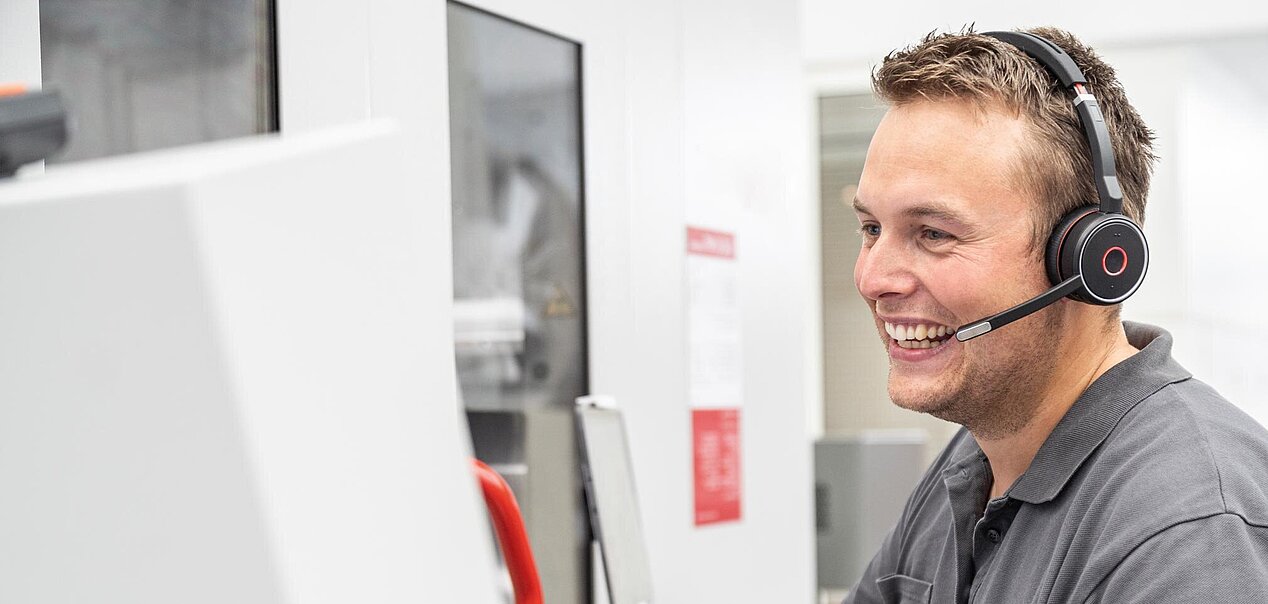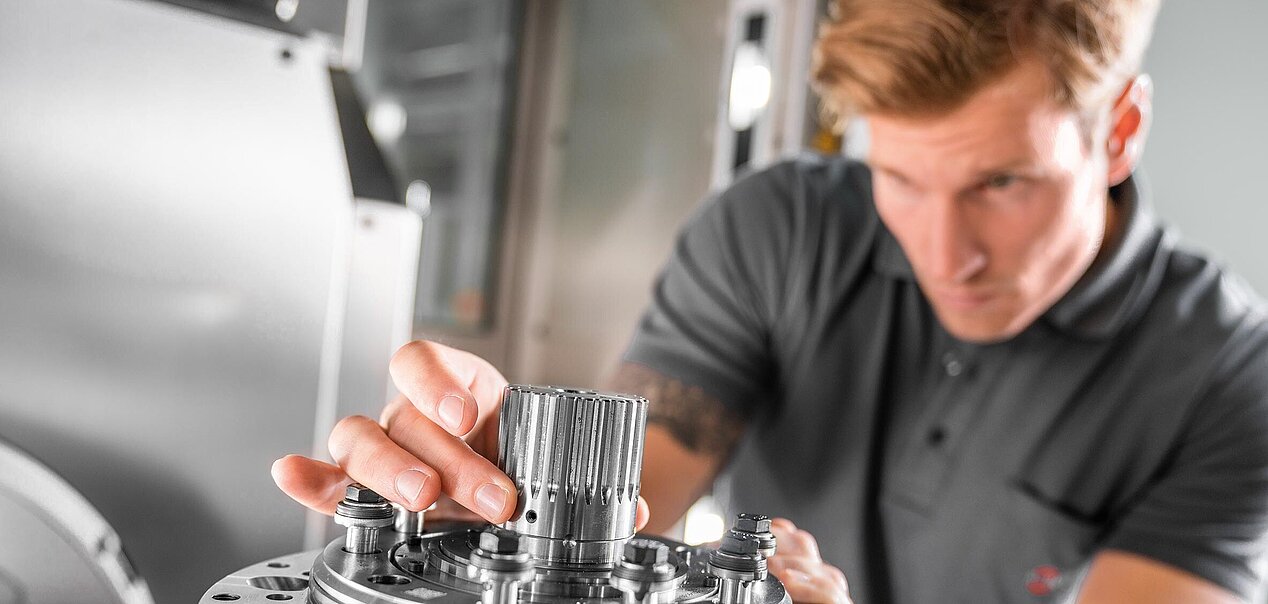C 42 | Isar Aerospace | Precision machining for rocket engines
Isar Aerospace is developing rockets that are to put satellites into orbit at low cost. Prototypes for the propulsion system as well as sub-components are being manufactured on a Hermle C 42 U 5-axis machining centre. For the Munich start-up, this is the ideal all-rounder for the initial phase of production.
“A satellite basically only consists of electronics. And what weighed 10,000 kg in the 1990s weighs just 100 kg 25 years later.” Josef Fleischmann, COO of Isar Aerospace Technologies GmbH, is standing in front of the latest version of his rocket propulsion system together with his production manager Christian Wenzl. He is talking about and elaborating on the capabilities of the medium-sized launch vehicles that he and his team are currently developing. ‘Spectrum’ will be 27 metres long and two metres in diameter. Only one fifth of the spacecraft is earmarked for payload and technology. The oxygen and fuel tanks, which store the fuel supply, represent the largest part of the rocket. At its core is the propulsion system: When operational, nine rocket engines will transport the rocket together with several satellites on board to ‘LEO’, i.e. ‘low earth orbit’. A thrust of 675 kN enables a payload capability of up to 1,000 kg. The second stage contains a tenth engine. It can be ignited multiple times, thus allowing launch services for satellite constellations. “We can transport several satellites into specific orbits using a single rocket,” explains the COO. The empty rocket body then burns up during a controlled re-entry into the Earth’s atmosphere.
In 2018, Fleischmann, along with Daniel Metzler and Markus Brandl, founded Isar Aerospace Technologies GmbH with the vision of offering low-cost satellite launch services to satellite manufacturers. They had previously spent a decade researching together at the Technical University of Munich, where they dedicated themselves to building rocket propulsion systems solely for research purposes. Fleischmann now oversees the operational aspects of the business, while technical production is entrusted to Christian Wenzl, who only joined Isar Aerospace in the summer. Sixteen of the total 120 employees at Isar Aerospace are part of his production team.
Intermediate station
A prototype of the rocket propulsion system is stood at the edge of the 5,000-square-metre production facility. It is shielded from prying eyes by a temporary cover, thus giving it the appearance of being just another one of the many boxes and crates scattered around. Apart from a work area featuring a desk, workbench and a few production machines, the workshop is largely empty. The startup only moved into the building in the summer and has therefore reached another milestone – the start of production. “It is now my job to fill this building with more machines,” says Christian Wenzl. He estimates that it will take about two years before the vertical range of manufacture necessitates more machines than the current facility can accommodate Isar Aerospace currently still outsources some of its manufacturing processes. “In the long term, we want to manufacture all propulsion system and control components in-house, and preparations are already under way for a large enough workshop,” says Christian Wenzl.
Maschinenfabrik Berthold Hermle AG has been involved right from the start. “What we needed for starting production was an all-rounder that was able to deliver high quality, high production rates and reliability,” explains Wenzl. “We compared various suppliers, asked our own suppliers for recommendations and came to the conclusion that Hermle provides the best overall package.” This also includes the service: “With Hermle, you know that if there is a failure somewhere, the machine will not be idle for long,” adds the production manager. In selecting a model, the Munich entrepreneurs oriented themselves on the largest component that needs to be accommodated on the 5-axis machine, namely the thrust nozzle. Thanks to its characteristic shape, it accelerates the exhaust to high speeds, thus increasing the thrust. It is manufactured additively and then finished in a subsequent step. Boasting a collision circle diameter of 990 mm, the C 42 U is ideally suited for this task.
Not pushed to its limits yet
The machining centre was ready for operation just a few weeks after the sales contract had been signed. Since then, Isar Aerospace has been manufacturing a large range of parts on the C 42 U, mainly using materials that are difficult to mill. The individual processing times vary accordingly, ranging from 2 to 40 hours. In all cases, maintaining accuracy is paramount. “We anticipate ± 1/100 mm accuracy for free-form surfaces and reliably achieve ± 2.5 µ accuracy for high-precision cylinder fits when using the Hermle machine with the appropriate tool,” explains Tim Leidenberger, production technician at Isar Aerospace. Even if the air conditioning in the production facility goes on strike: “The Hermle machine maintains the utmost precision despite temperature fluctuations in the workshop. I am surprised by the machine’s excellent temperature management time and time again,” he claims. Generally speaking, everything has gone to plan so far, and Leidenberger is confident that all future projects will also be successful. “The machine is nowhere near its limits just yet,” he says with confidence.









